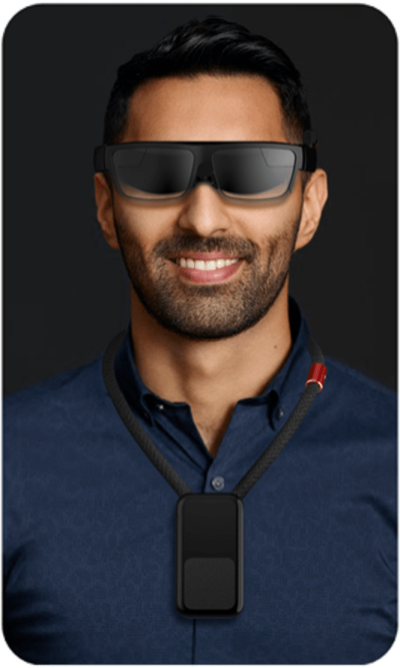Verizon and Motorola hope to make AR/VR experiences more portable and scalable with the creation of a new hands-free 5G XR wearable neckband.
Together with Lenovo, Motorola said the lightweight, plug and play wearable device delivers high bandwidth, ultra-low latency connectivity and power to AR glasses and VR goggles using Verizon’s 5G Ultra Wideband network and mobile edge compute platform. The neckband is powered by Qualcomm’s Snapdragon 8 Gen 1 mobile platform.
RELATED: ASU aims to untether immersive learning with 5G
The product was recently approved by the FCC, according to Motorola. It was built in partnership with the Motorola 312 Labs R&D Group, an internal group which formed last year.

“Motorola’s wearable neckband and ultra-lightweight AR smart glasses leverage Verizon’s 5G Ultra Wideband network and mobile edge compute platform, enabling us to deliver immersive technology in many fields, such as sports training and fan experiences, as well as making VR theaters scalable,” said Brian Mecum, VP of Device Technology at Verizon, in the announcement.
It uses Verizon's 5G network and MEC to stream content and display on nearby screens.
According to a Motorola spokesperson, the neckband can be used as the compute device for an application or as a 5G device to pass data to the edge for computing. The company sees benefits reaching across industries, for both work and play, including entertainment, education, product design, manufacturing, warehousing, marketing, service and retail.
Motorola said the new neckband “redefines the role of the smartphone by allowing users to display content to more immersive screens around them.”
Motorola declined to comment on when the technology will be commercially available, but said it continues to collaborate with Verizon to test out the device and get user feedback. And while it will work with other AR/VR devices, the neckband has been optimized for the best experience with Lenovo's ThinkReality A3 smart glasses, according to a spokesperson.
Extended reality (XR) is a category Qualcomm’s also placed a high priority on, including the launch last week of new XR labs in Europe. They’re initially located across six cities and the chipmaker said it plans to expand in the future. During the company’s Snapdragon Summit in December, Hugo Swart, head of XR at Qualcomm, said XR is a perfect match with mobile edge compute, in part because it splits where processing needs to happen.
RELATED: Qualcomm’s XR chief says MEC, XR are ‘perfect match’
Lenovo and Motorola also are initial partners to support Qualcomm’s Snapdragon Spaces in 2022, a software platform to help AR glasses as companions to smartphones and enabling developers to build 3D applications. The match up most recently saw enterprise AR solutions with Motorola smartphones powering ThinkReality A3 smart glasses.
Heavy compute requirements for AR/VR have seen a variety of players working to make experiences that aren’t bogged down by large equipment or the need to tether. Untethered VR experiences that leverage edge compute, the cloud and 5G in higher education settings is one of the focuses for Arizona State University under a recently expanded partnership with Verizon.
T-Mobile has also jumped in on the AR action, announcing in November it was the exclusive 5G launch partner in North America for the Qualcomm Snapdragon Spaces XR developer platform. Through the operator’s Accelerator program, it plans to work directly with startups and developers to build immersive 5G experiences for AR glasses starting this spring, with industries like gaming and entertainment in its sights.
